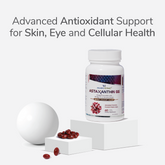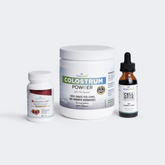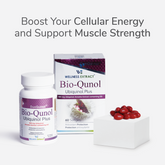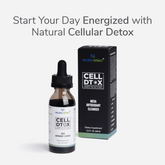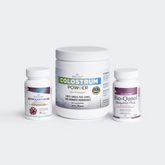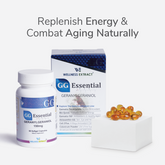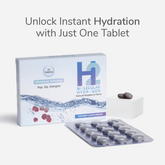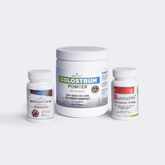Estimated Reading Time: 7 minutes
|As they say, “The road to good health is paved with good intestines.”
You’ve probably heard similar sayings “eat good food to stay healthy”. In today’s fast-paced world, these age-old truths have taken a modern twist, especially with all the talk around probiotics and prebiotics.
Most of the time, you follow these trends without a second thought. But have you ever stopped asking how true these claims are? Maybe not.
Let’s take a quick look at how gut health affects your overall well-being. And then, we’ll explore what probiotics and prebiotics actually are, how they differ, and which one your body really needs.
How Your Gut Health Shapes Your Overall Well-Being
The gut is often called the “Second Brain” for a reason. It does far more than digesting food. It continuously evolves from the moment you are born. Initially, your gut starts with very few bacteria. But as you grow, the number of good bacteria increases exponentially. All thanks to the colostrum your mother fed you. Yes! Isn’t it amazing?
Over time, a diverse gut microbiome develops, affecting your emotions and function. Don’t be surprised! Gut health isn’t just about digestion; it also plays a key role in your immunity, heart, brain, and even mental well-being.
Here’s how:
-
Gut and Immunity:
A large part of your immune system resides in the gut. Good bacteria help produce infection-fighting proteins, maintain a healthy pH, and strengthen the gut lining.
When this balance is disrupted, harmful bacteria can thrive, leading to inflammation.
-
Gut and Heart Health:
Healthy gut flora supports better heart health. Studies link it to improved HDL (good cholesterol) and lower triglyceride levels.
-
Gut, Mood, and Mental Clarity:
Your gut produces a mood-stabilizing hormone (serotonin), making it closely tied to your emotional well-being. It also sends signals that influence how you feel and think. So, improving gut health may ease anxiety, lift your mood, and sharpen your focus.
These are just a few examples of how your gut influences your overall well-being. To maintain good gut health, probiotics and prebiotics are among the possible ways to support it.
But how exactly are they connected? Let’s break it down below.
What are Probiotics and Prebiotics?
While probiotics and prebiotics may sound similar and both support gut health, they’re not the same, and it’s easy to mix them up. Let’s clear up the confusion.
A. Probiotics
The International Scientific Association for Probiotics and Prebiotics says probiotics are “live microorganisms that, when taken in enough amounts, provide health benefits to the person.”
In other words, probiotics are live, good bacteria that, if you consume enough of them, can help keep your body and especially your gut healthy and working well.
These microorganisms, which consist mainly of bacteria but also include yeasts, are present in some fermented foods (e.g., yogurt), and are added to certain food products.
Sources of Probiotics
Common dietary sources of probiotics include a variety of fermented foods and dietary supplements that contain live beneficial bacteria, as given below:
-
Fermented Foods:
-
Yogurt (with Lactobacillus bulgaricus and Streptococcus thermophilus)
-
Cheeses
-
Kimchi
-
Kombucha
-
Sauerkraut
-
Miso
-
Pickles
-
Raw, unfiltered apple cider vinegar
-
Unfermented Foods (with added probiotics):
-
Milks
-
Juices
-
Smoothies
-
Cereals
-
Nutrition bars
-
Infant and toddler formulas
Note: These usually list probiotic strains on the label, often with the number of live microbes called CFU — colony-forming units.
-
Dietary Supplements:
-
Capsules
-
Powders
-
Liquids
Note: May contain one or multiple probiotic strains.
Mechanism of Action: Probiotics
Probiotics exert their health effects through a wide variety of mechanisms. Some of these mechanisms, such as inhibiting the growth of pathogenic microorganisms (organisms that can cause disease) in the gastrointestinal tract, are widely shared among probiotic strains. Other than this, they also help in:
-
Supporting digestion and helping your gut return to normal after it has been disturbed, such as after taking antibiotics.
-
Producing helpful substances like short-chain fatty acids that support gut health.
-
Lowering gut pH makes it harder for harmful microbes to grow.
-
Probiotics help produce key B-vitamins, break down toxins like mycotoxins and heavy metals, and strengthen the gut lining.
-
Supporting a healthy immune system can even affect how the brain and hormones work.
Note: Not all probiotics work the same. Their benefits depend on the specific type (or strain), and each strain may have unique effects.
B. Prebiotics
Prebiotics were first described as a type of food your body can’t digest, but that helps certain good bacteria in your gut grow and stay active.
Later, in 2006, the International Scientific Association of Probiotics and Prebiotics (ISAPP) updated the definition. They said prebiotics are ingredients that are fermented by gut bacteria and lead to positive changes in the gut.
Simply put, prebiotics are food parts that gut microbes use for energy. In return, they create helpful compounds like short-chain fatty acids that support gut health.
Sources of Prebiotics
Prebiotics are mostly indigestible plant fibers that feed the beneficial bacteria in your gut. They are found naturally in a variety of foods and are also added to supplements and processed products. Common sources include:
-
Natural Food Sources:
-
Garlic
-
Onions
-
Leeks
-
Chicory root
-
Jerusalem Artichokes
-
Bananas, Peas, and Beans
Note: Some fruits (like apples and citrus) also contain prebiotic fibers like pectin.
-
Human and Cow’s Milk:
-
Contains naturally occurring prebiotic galacto-oligosaccharides (GOS)
-
Beneficial for infant gut development
-
Non-Carbohydrate Prebiotics:
-
Compounds like cocoa-derived flavanols may also work as prebiotics
-
They support good gut bacteria even though they are not fibers
-
Fortified Foods and Supplements:
-
Prebiotics are added to products like cereals, nutrition bars, and dairy items
-
Also available as dietary supplements made from ingredients like lactose, starch, or sucrose
Mechanism of Action: Prebiotics
Prebiotics act as food for the good bacteria in your gut. By feeding them, they help these helpful microbes grow and stay active. Here’s how they support gut health:
-
Feed the Right Bacteria: Different types of prebiotics can be digested by specific gut bacteria. Some bacteria work together when one breaks down a prebiotic; others feed on the by-products. This is called cross-feeding.
-
Strain Specificity: Not all bacteria can digest all types of prebiotics. For example, only certain bacteria can break down long-chain fibers like inulin, while many can digest shorter chains.
-
Change Gut Environment: When gut bacteria ferment prebiotics, they produce acids that lower the pH of the gut and make it more acidic. This shift helps beneficial bacteria, such as those that produce butyrate (a gut-friendly fatty acid) thrive, while reducing harmful bacteria.
Now that you know the difference between probiotics and prebiotics, let's address the crucial question…
Which Do You Need? Probiotics or Prebiotics
You might need both! As they work together, probiotics add good bacteria, and prebiotics feed them. Depending on your health needs, one may be more helpful at certain times but taking both can enhance overall gut health. Just make sure to choose products backed by solid research and consult a healthcare provider to find out what suits you best.
Key Difference Overview! Probiotics vs. Prebiotics
|
Feature |
Probiotics |
Prebiotics |
|
Definition |
Live beneficial microorganisms (mainly bacteria and some yeasts) |
Non-digestible food components that feed beneficial gut bacteria |
|
Function |
Add to the population of healthy microbes in the gut |
Act as food to nourish and stimulate the growth of beneficial microbes |
|
Source Type |
Found in fermented foods or dietary supplements |
Found in high-fiber foods or added to supplements and processed products |
|
Common Food Sources |
Yogurt, kefir, kimchi, kombucha, sauerkraut, miso, fermented pickles |
Garlic, onions, bananas, leeks, chicory root, barley, oats, soybeans, apples |
|
Supplement Forms |
Capsules, powders, liquids with live strains |
Powders, capsules, fortified foods with plant fibers or oligosaccharides |
|
Survivability |
Must survive stomach acid to reach the intestines |
Not alive — they’re not affected by stomach acid or bile |
|
Mechanism of Action |
Colonize the gut, inhibit harmful microbes, produce helpful compounds |
Feed existing beneficial microbes, promote their activity, and help alter gut pH |
|
Strain Specificity |
Benefits depend on specific probiotic strains |
Effects depend on prebiotic type and which bacteria can utilize it |
|
Example Strains/Compounds |
Lactobacillus, Bifidobacterium, Saccharomyces boulardii |
Inulin, fructooligosaccharides (FOS), galactooligosaccharides (GOS), resistant starches |
|
Use Case |
Helpful after antibiotics, for digestive support, or specific health concerns |
Used for general gut support, enhancing probiotics, and long-term gut balance |
Conclusion
Maintaining a healthy gut is key to supporting both your mental and physical well-being. Understanding the role of probiotics and prebiotics in nurturing your gut is crucial for making informed health choices. Whether you’re looking to enhance digestion, boost immunity, or improve mental clarity, the right balance of these gut-friendly compounds can make a significant difference.
Since everyone’s microbiome is unique, it’s important to consult with a healthcare provider to determine the best options tailored to your needs. Prioritizing gut health is one of the most affordable and effective ways to invest in your overall wellness.
Disclaimer: These statements have not been assessed by the FDA. The information contained within this page is for educational purposes only. It is not intended to replace the advice or care of healthcare professionals.
References:
1. Office of Dietary Supplements - Probiotics (no date). https://ods.od.nih.gov/factsheets/Probiotics-HealthProfessional/.
2. Davani-Davari, D. et al. (2019) 'Prebiotics: definition, types, sources, mechanisms, and clinical applications,' Foods, 8(3), p. 92. https://doi.org/10.3390/foods8030092.




















